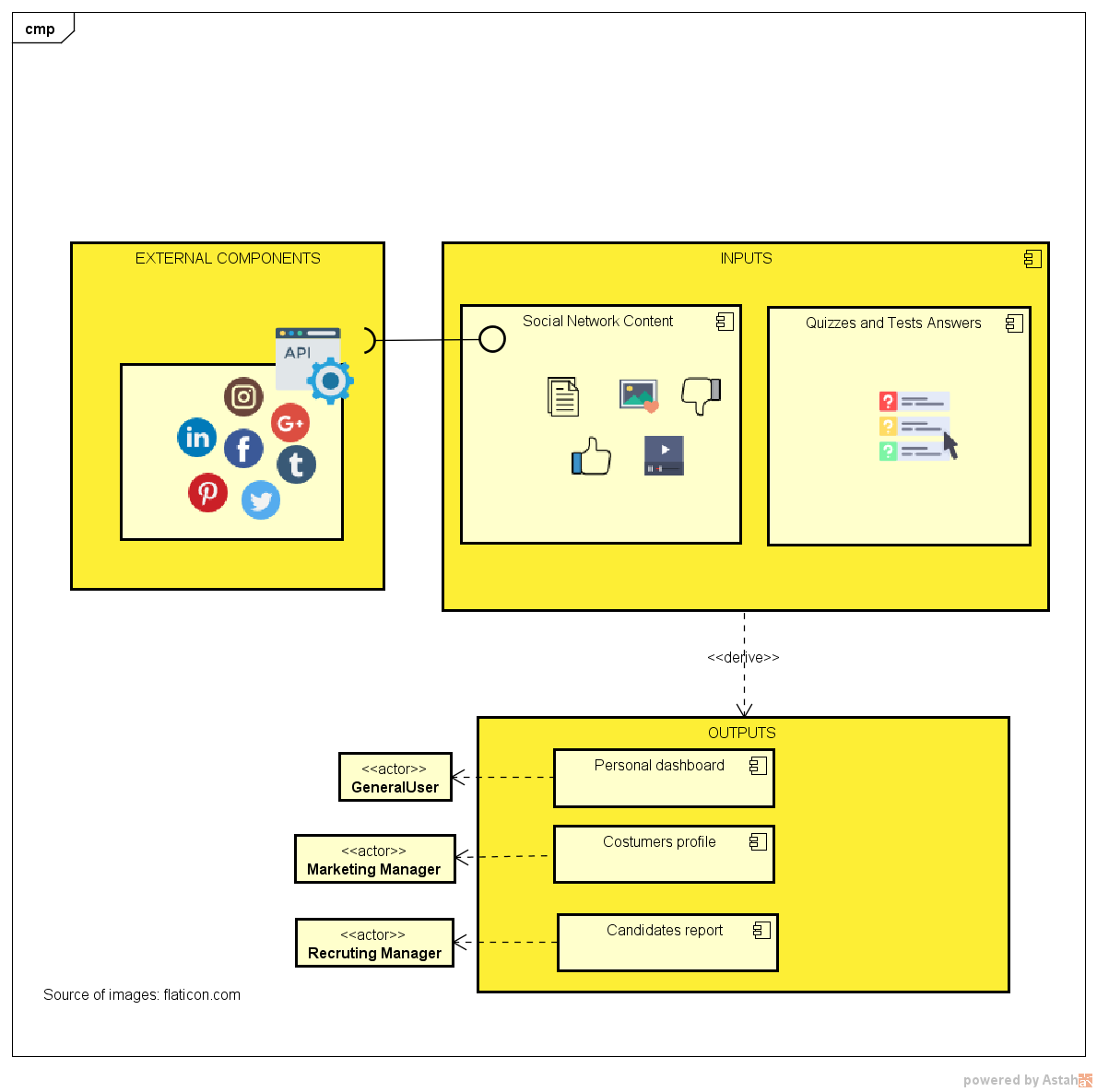A computer-based system should have as a primary resource a design or architecture of its structure. According to [1], an architecture is “any well defined form of a system’s essential, unifying structure defined in terms of components, connections and constraints along with the system’s interaction with its environment”.
The architecture helps the developers and even the laymen to understand how the system works in general and what components it has. As shown in Figure 1, we have three building blocks in the Aura system: 1) external components, 2) inputs and 3) outputs.

External components
Aura depends mainly on social media content, and the legal and easier way to have authorization, both from users and from the respective companies, and access to the data to collect them is using APIs – Application Programming Interfaces for each external application. Therefore, our system requires authorization via API and use it to consume the data it needs. These data become, then, input to the system processes.
Inputs
Besides the content collected from the users’ social networks, there are more data that comes from the users who answer our fun quizzes and personality tests. Combined, both sources can provide Aura with enough material to proceed a sentiment analysis.
Outputs
As Aura has two segments of customers, people and business, there are different outputs for each. General Internet users, or simply people, have as outcome an overview of their emotional behaviour online. They are informed about how the content they share is perceived in terms of sentiment, if they are positive or negative, and what feelings it suggests.
For companies, Aura offers two types of outputs. One for the marketing department, outlining the customer profile of the users who are positive or negative about the respective brands; and another for the recruiting department, as a report about the candidates’ profile, since those have signed up on Aura and have authorized this feature.
